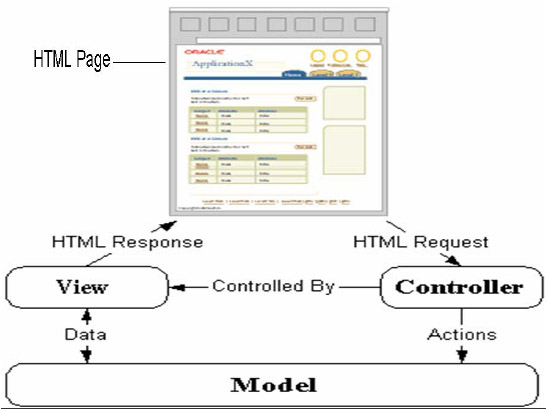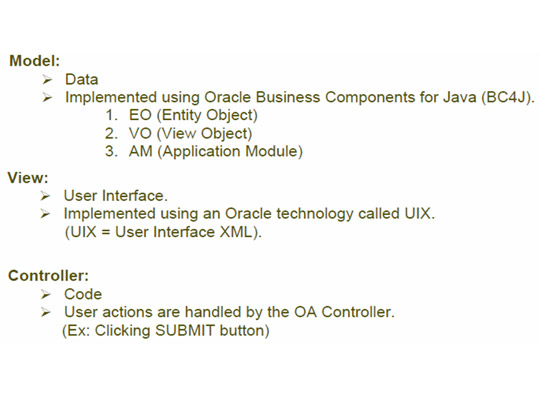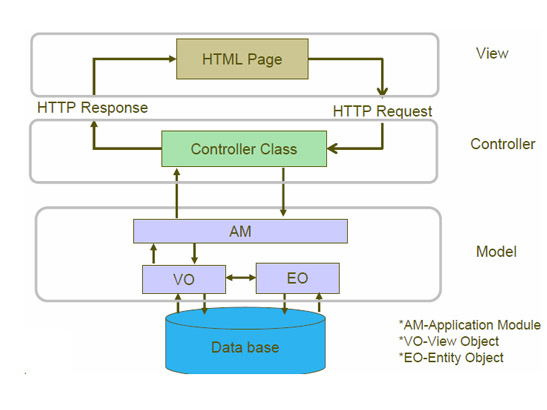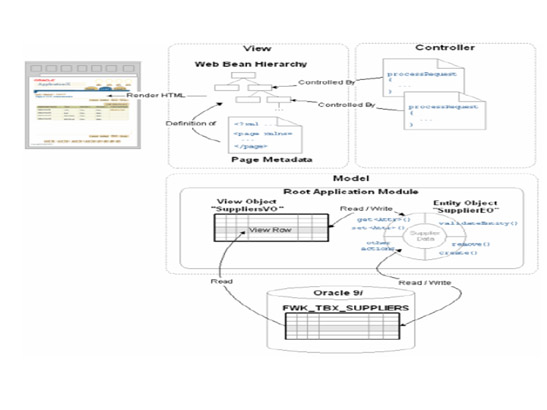| Index What is OA Framework Why OA Framework OAF Vs FORMS OA Framework Architecture MVC Architecture and its Components Profile Options JDeveloper Structure Naming Standards What is OA Framework? Oracle Application Framework(OA Framework) is a proprietary framework developed by Oracle Corporation for application development within the Oracle E-Business Suite. Available to customers for personalization, customizations and custom-application development. The OA Framework is a Model-view-controller (MVC) framework built using J2EE (Java 2 Platform, Enterprise Edition)technologies. Why OA Framework? Advantages : Enterprise-Grade Performance and Scalability Improved End User Productivity Highly extensible architecture Browser Look and Feel (BLAF terminology) for all applications Open industry Standards such as XML, HTML, Java, JSP, SQL and Web Services.
| ||||||||||||||
| ||||||||||||||
| Components of MVC Architecture | ||||||||||||||
| ||||||||||||||
| Interaction between model, view and controller | ||||||||||||||
| ||||||||||||||
| Entity Object (EO) | ||||||||||||||
| Entity Object is based on database table or other data source. Entity Object contains attributes which represent database columns. All insert/update/delete (DML Operations) transactions go through EO to database. | ||||||||||||||
| View Object (VO) | ||||||||||||||
| Two types 1. SQL based 2. EO based Represents a query result. Is used for joining, filtering, projecting, and sorting your business data. Can be based on any number of entity objects (EOs) and provides access to EOs. | ||||||||||||||
| Application Module (AM) | ||||||||||||||
| Every page must have a root application module. Handles transactions. Application Modules serve as containers for related BC4J Objects. The objects are related by participating in the same task (for example, a multi-page UI for creating purchase orders) Application Modules provide transaction context Application Modules establish database connections Application Modules may be nested to provide more complex application modules | ||||||||||||||
| Controller (CO) in MVC Architecture | ||||||||||||||
| Responds to user actions and directs application flow. Model objects like EO and VO can't be accessed directly from the Controller Class, except AM. Contains methods such as 1. ProcessRequest: Fires when OAF page loads for the first time. 2. ProcessFormRequest: Fires when user submits the page. (Ex: clicking GO button) | ||||||||||||||
| MVC Architecture | ||||||||||||||
| ||||||||||||||
| Model-View-Controller (MVC) Design Pattern | ||||||||||||||
| ||||||||||||||
| Profile Options | ||||||||||||||
| To Enable the “about this page” link on the page set the below profile option as “yes” FND: Diagnostics : Yes To Enable the “personalize page” link on the page set the below profile options as “yes” Personalize Self-Service Defn : Yes FND: Personalization Region Link Enabled : Yes | ||||||||||||||
| Jdeveloper Structure | ||||||||||||||
| ||||||||||||||
| Naming Standards | ||||||||||||||
| Page Name Ends with PG/PAGE Region name ends with RN Entity Object Name ends with EO View Object ends with VO Application Module Name Ends with AM Controller Name ends with CO |
http://oafadfmahi.com/oaf/oafbasic1.html






